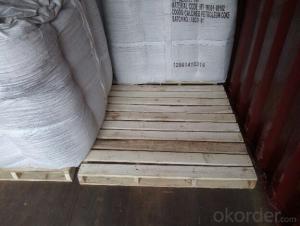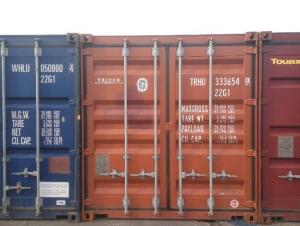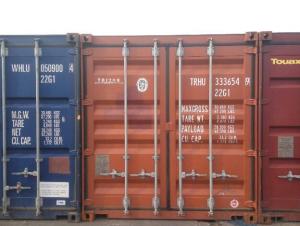Calcined Petroleum Coke Price Good for Steelmaking
- Loading Port:
- Tianjin
- Payment Terms:
- TT OR LC
- Min Order Qty:
- 1 m.t.
- Supply Capability:
- 10000000 m.t./month
OKorder Service Pledge
OKorder Financial Service
You Might Also Like
1.Structure of Calcined Petroleum Coke Description
Calcined Petroleum Coke is made from raw petroleum coke,which is calcined in furnace at a high temperature(1200-1300℃).CPC/Calcined Petroleum Coke is widely used in steelmaking,castings manufacture and other metallurgical industry as a kind of recarburizer because of its high fixed carbon content,low sulfur content and high absorb rate.Besides,it is also a best kind of raw materials for producing artifical graphite(GPC/Graphitized Petroleum Coke) under the graphitizing temperature(2800℃).
2.Main Features of the Calcined Petroleum Coke
High-purity graphitized petroleum coke is made from high quality petroleum coke under a temperature of 2,500-3,500°C. As a high-purity carbon material, it has characteristics of high fixed carbon content, low sulfur, low ash, low porosity etc.It can be used as carbon raiser (Recarburizer) to produce high quality steel,cast iron and alloy.It can also be used in plastic and rubber as an additive.
3. Calcined Petroleum Coke Images


4. Calcined Petroleum Coke Specification
| Place of Origin: | Shanxi, China (Mainland) | Type: | Petroleum Coke | Calory (J): | 7200 |
| Sulphur Content (%): | 0.4 | Ash Content (%): | 0.5 | Fixed Carbon (%): | 97 |
| Moisture (%): | 0.5 | Phosphorus Content (%): | 0.035 | Volatile Matter (%): | 1.5% |
| Abrasive Resistance: | 7% | Crushing Strength: | 82% | Brand Name: | CNBM |
| Model Number: | 130521 | colour: | black | size: | 1-3mm,1-8mm |
5.FAQ of Calcined Petroleum Coke
1). Q: Are you a factory or trading company?
A: We are a factory.
2). Q: Where is your factory located? How can I visit there?
A: Our factory is located in ShanXi, HeNan, China. You are warmly welcomed to visit us!
3). Q: How can I get some samples?
A: Please connect me for samples
4). Q: Can the price be cheaper?
A: Of course, you will be offered a good discount for big amount.
- Q: What are the 3K, 12K, UD, etc. in the appearance requirements of the carbon fiber bicycle? What's the difference?
- 3K and "12K" refer to carbon fiber woven fabrics. 3K 12K cloth cloth texture is fine, coarse texture.UD is not imitation carbon fiber, refers to the polyethylene fiber woven fabric, the strength is lower than the carbon fiber, but the density is smaller than the carbon fiber, is often used to make bullet proof material.Carbon fiber and polyethylene fiber belong to high performance fiber.Advisory 181150695.
- Q: How does carbon impact the structure and function of ecosystems?
- Carbon is a fundamental element that plays a crucial role in shaping the structure and function of ecosystems. It is a building block of life, present in all living organisms, and is constantly cycling between the atmosphere, living organisms, and the Earth's surface. Carbon impacts ecosystems in various ways, both directly and indirectly. Firstly, carbon is a key component of organic matter, such as plants, animals, and decomposing organic materials. It provides the energy and nutrients necessary for the growth and development of organisms. Through photosynthesis, plants absorb carbon dioxide from the atmosphere and convert it into organic compounds, primarily carbohydrates, that serve as a source of energy and building material for other organisms. This process forms the basis of the food chain, as herbivores consume plants and carnivores consume herbivores. Thus, carbon is essential for the structure and functioning of ecosystems by sustaining the productivity and biodiversity of organisms within them. Moreover, carbon influences the physical structure of ecosystems. In terrestrial ecosystems, carbon is stored in vegetation and soils, forming carbon sinks. Forests, for example, store vast amounts of carbon in their biomass and soils, playing a crucial role in mitigating climate change by absorbing and sequestering carbon dioxide. The loss of these ecosystems, through deforestation or degradation, can release large amounts of carbon back into the atmosphere, contributing to the greenhouse effect and climate change. In marine ecosystems, carbon is stored in the form of dissolved inorganic carbon, which can impact ocean acidity. The increasing concentration of carbon dioxide in the atmosphere leads to ocean acidification, affecting the growth and survival of marine organisms, particularly those with calcium carbonate shells or skeletons, such as corals and mollusks. Furthermore, carbon influences the functioning of ecosystems through its role in nutrient cycling. Decomposition, the process by which organic matter is broken down and recycled, is largely driven by microorganisms that respire carbon dioxide. Decomposition releases nutrients such as nitrogen, phosphorus, and sulfur back into the soil, making them available for uptake by plants. This nutrient cycling is essential for maintaining the productivity and nutrient balance within ecosystems. Changes in carbon availability can affect the rates of decomposition and nutrient cycling, which in turn can impact the structure and functioning of ecosystems. Overall, carbon is a fundamental element that significantly impacts the structure and function of ecosystems. Its role in energy transfer, organic matter formation, nutrient cycling, and climate regulation makes it essential for the sustainability and functioning of all living organisms within an ecosystem. Understanding and managing carbon dynamics is crucial for maintaining the health and resilience of ecosystems in the face of environmental changes.
- Q: What are the impacts of carbon emissions on urban environments?
- Carbon emissions have significant impacts on urban environments. Firstly, they contribute to the greenhouse effect, leading to climate change and increased temperatures in cities. This can result in heatwaves, reduced air quality, and worsened health conditions for urban dwellers. Secondly, carbon emissions from transportation and industries contribute to air pollution, leading to respiratory problems and other health issues. Additionally, carbon emissions are a major driver of global warming and sea-level rise, posing a threat to coastal cities. To mitigate these impacts, cities need to prioritize sustainable transportation, energy-efficient buildings, and renewable energy sources to reduce carbon emissions and create healthier urban environments.
- Q: How are carbon compounds classified?
- Carbon compounds are classified based on the type and number of atoms bonded to carbon atoms. There are several categories of carbon compounds that include hydrocarbons, alcohols, aldehydes, ketones, carboxylic acids, esters, ethers, amines, amides, and many more. Hydrocarbons are carbon compounds that only contain carbon and hydrogen atoms. They can be further divided into two main categories: aliphatic hydrocarbons and aromatic hydrocarbons. Aliphatic hydrocarbons include alkanes, alkenes, and alkynes, which are classified based on the type of carbon-carbon bonds they have. Aromatic hydrocarbons, on the other hand, contain a ring structure and are known for their aromaticity. Alcohols are carbon compounds that contain a hydroxyl (-OH) group attached to a carbon atom. They are classified based on the number of hydroxyl groups attached to the carbon atom. For example, methanol is a monohydroxy alcohol, while ethylene glycol is a dihydroxy alcohol. Aldehydes and ketones are carbon compounds that contain a carbonyl group (C=O). Aldehydes have the carbonyl group attached to a terminal carbon atom, while ketones have it attached to an internal carbon atom. They are named based on the number and position of the carbonyl group in the molecule. Carboxylic acids are carbon compounds that contain a carboxyl group (-COOH). They are named by replacing the -e ending of the corresponding hydrocarbon with -oic acid. For example, methane becomes methanoic acid. Esters are carbon compounds that are derived from the reaction between a carboxylic acid and an alcohol. They have the general formula RCOOR’, where R and R’ can be any alkyl or aryl group. They are often named based on the alcohol and acid used to form them. Ethers are carbon compounds that have an oxygen atom bonded to two alkyl or aryl groups. They are named by listing the alkyl or aryl groups in alphabetical order followed by the word ether. Amines are carbon compounds that contain a nitrogen atom bonded to one or more alkyl or aryl groups. They are named by adding the suffix -amine to the name of the alkyl or aryl group attached to nitrogen. Amides are carbon compounds that contain a carbonyl group (C=O) bonded to a nitrogen atom. They are named by replacing -oic acid or -ic acid ending of the corresponding carboxylic acid with -amide. Overall, the classification of carbon compounds is based on their functional groups and the arrangement of atoms around the carbon atom. These classifications help to categorize and study the diverse range of carbon compounds found in nature and synthesized in the laboratory.
- Q: What are the impacts of carbon emissions on the stability of coastal areas?
- Carbon emissions have significant impacts on the stability of coastal areas. The primary consequence is the acceleration of global warming, leading to rising sea levels and increased frequency and intensity of coastal storms. This combination results in erosion, coastal flooding, and loss of land, endangering ecosystems, infrastructure, and human settlements. Additionally, carbon emissions contribute to ocean acidification, harming marine life and disrupting delicate coastal ecosystems. Therefore, reducing carbon emissions is crucial to mitigate these adverse effects and ensure the long-term stability of coastal areas.
- Q: How does carbon affect the formation of smog?
- Carbon plays a significant role in the formation of smog, particularly in the form of carbon monoxide (CO) and volatile organic compounds (VOCs). When fossil fuels are burned, such as in vehicles, power plants, or industrial processes, carbon is released into the atmosphere in the form of CO and VOCs. These carbon emissions, especially in areas with high population density, can contribute to the formation of smog. Smog is a mixture of air pollutants, primarily ground-level ozone, which is formed when nitrogen oxides (NOx) and VOCs react in the presence of sunlight. Carbon monoxide is a precursor to the formation of ground-level ozone. It reacts with nitrogen oxides and sunlight to form ozone, a major component of smog. VOCs, on the other hand, react with nitrogen oxides in the presence of sunlight to form additional ground-level ozone. Additionally, carbon particles, also known as black carbon or soot, can contribute to the formation of smog. These particles absorb sunlight and heat the surrounding air, leading to temperature inversions. Temperature inversions trap pollutants close to the ground, preventing them from dispersing and exacerbating smog formation. Reducing carbon emissions is crucial in controlling and preventing smog formation. Implementing cleaner technologies, such as catalytic converters in vehicles and using cleaner fuels, can help decrease the release of carbon monoxide and VOCs. Furthermore, promoting renewable energy sources and reducing reliance on fossil fuels can significantly reduce carbon emissions, thus mitigating the formation of smog.
- Q: How does carbon affect the quality of indoor air?
- Carbon can have a significant impact on the quality of indoor air as it is emitted from various sources such as burning fossil fuels, cooking, and smoking. High levels of carbon can lead to poor air quality, causing symptoms like headaches, dizziness, and fatigue. Additionally, carbon monoxide, a toxic gas produced by incomplete combustion, can be lethal in enclosed spaces. Therefore, it is crucial to properly ventilate and monitor indoor areas to mitigate the negative effects of carbon on indoor air quality.
- Q: How is carbon used in the steel industry?
- Carbon is used in the steel industry as an essential element for the production of steel. It is added to iron during the steelmaking process to increase the strength and hardness of the final product. By controlling the carbon content, different types of steel with varying properties can be produced, such as high carbon steel for tools or low carbon steel for structural applications.
- Q: Carbon Finance: Carbon Finance
- The "Framework Convention" is the world's first comprehensive control of carbon dioxide and other greenhouse gas emissions, the International Convention for the human economic and social adverse effects in response to global warming, a basic framework is also the international society for international cooperation in tackling global climate change on the issue. According to statistics, 191 countries have ratified the Convention at present. These countries are called parties to the convention. The parties to the Convention have made many pledges aimed at addressing climate change. Each party must submit periodic reports, which contain the greenhouse gas emission information of the contracting parties and indicate plans and specific measures for the implementation of the convention. The Convention came into force in March 1994 and laid the legal foundation for international cooperation in dealing with climate change. It was an authoritative, universal and comprehensive international framework. The Convention consists of a preamble and 26 main texts. The Convention is legally binding to control emissions of carbon dioxide, methane and other greenhouse gases in the atmosphere and stabilize the concentration of greenhouse gases from the destruction of the climate system. The Convention differs from the developed countries and developing countries in terms of their obligations and procedures for fulfilling their obligations.
- Q: How does carbon dioxide affect the acidity of rainwater?
- Carbon dioxide affects the acidity of rainwater by contributing to the formation of carbonic acid. When carbon dioxide dissolves in rainwater, it reacts with water molecules to form carbonic acid. This reaction increases the concentration of hydrogen ions (H+) in the water, leading to a decrease in pH and the formation of acidic rainwater. The carbonic acid formed from carbon dioxide is a weak acid, but it can still lower the pH of rainwater, making it more acidic than normal. This increased acidity can have detrimental effects on the environment, including damaging plant and animal life, corroding buildings and infrastructure, and affecting aquatic ecosystems.
Send your message to us
Calcined Petroleum Coke Price Good for Steelmaking
- Loading Port:
- Tianjin
- Payment Terms:
- TT OR LC
- Min Order Qty:
- 1 m.t.
- Supply Capability:
- 10000000 m.t./month
OKorder Service Pledge
OKorder Financial Service
Similar products
Hot products
Hot Searches
Related keywords




























